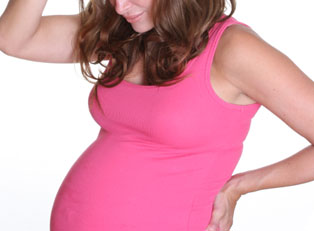Breech Baby Pregnancy and Births
Dr. Marjorie Greenfield, M.D., states in her article "Breech Babies" on drspock.com that only approximately 4% of pregnancies result in breech births. A breech pregnancy means that the baby's feet or buttocks are positioned at the bottom of the uterus, rather than at the top.
Types of Breech Pregnancies
Frank Breech: This is the most common type of breech birth, in which the baby's buttocks are in line to present first. The baby's legs are in front of his or her body, with the feet near the head.
Footling Breech: The legs are positioned to come out first, with one or both extended below the buttocks.
Complete Breech: The buttocks are closest to the birth canal, with the feet near them and the knees bent.
Switching A Baby's Position
In a cephalic pregnancy, the most common type, the infant's body is positioned with the head downward. Babies positioned this way in the last few weeks of the pregnancy will likely be born head-first. Babies in the breech position may not be born that way, as they are more likely to shift in the womb before birth.
Signs of a Breech Pregnancy
According to the American Congress of Obstetricians and Gynecologists' (ACOG) pamphlet "If Your Baby is Breech," your doctor can perform a physical to determine where the baby's head and body are positioned. Results can be confirmed using an ultrasound.
However, you may be able to feel your baby kicking at the bottom of your abdomen. You may also sense that your baby's head is positioned in the upper part of your belly. In some cases, neither the exam nor physical signs may be definitive indicators of a breech presentation (birth).
Causes
Although many breech births occur with no known reason, the ACOG's pamphlet cites a number of possible causes. One or more previous births, multiple fetuses (pregnancies involving twins or more), placenta at least partially covering the uterus (placenta previa), premature birth, excessive or not enough liquid in the uterus surrounding the fetus (amniotic fluid), an abnormally shaped uterus or fibroids and other uterine growths, or-rarely-birth defects may cause breech presentation.
Reversal
Sometimes, your doctor may suggest a technique called 'version' to change your baby's position and increase the chance of a vaginal birth. Version is only performed after 36 weeks, since your baby may change positions on his or her own before that time.
During version, the doctor places his or her hands on your abdomen in strategic spots. Pushing or lifting in these areas might help the baby roll forward or backward in the uterus and reverse the birth position, but results are not always successful.
A Cesarean birth (c-section) is often recommended in the case of breech pregnancies. A vaginal birth would be difficult, because the head does not come out first and stretch the cervix to make it easier for the rest of the baby's body to come out.
Vaginal birth also increases the risk of complications for breech pregnancies. The umbilical cord may become pinched and restrict blood flow to the baby's body.
Birth by c-section do carry some risks, but these are relatively rare and can be treated easily. They include negative effects from pain medication, bleeding, and infection. Keep in mind, however, that the majority of breech births produce healthy babies.



